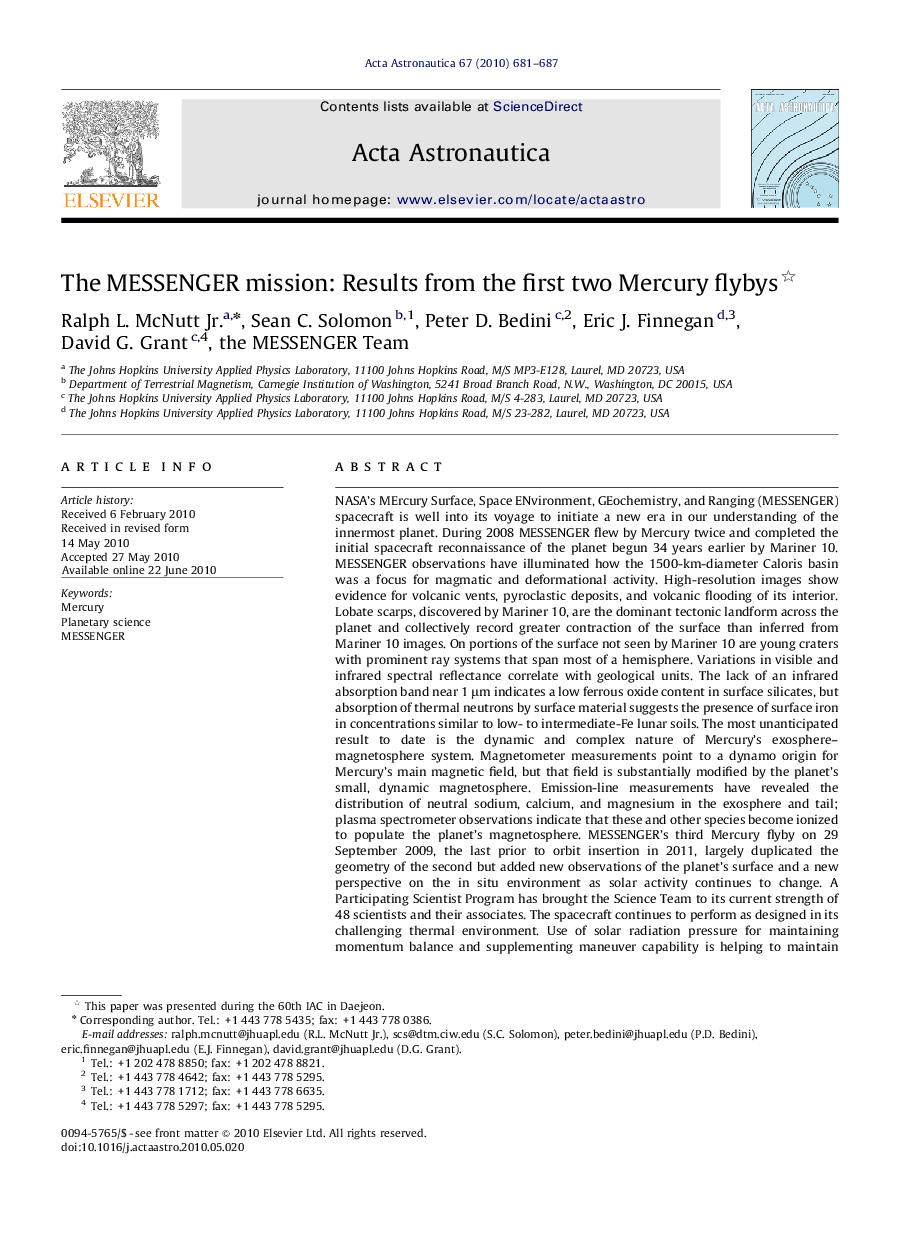| کد مقاله | کد نشریه | سال انتشار | مقاله انگلیسی | نسخه تمام متن |
|---|---|---|---|---|
| 1715629 | 1519993 | 2010 | 7 صفحه PDF | دانلود رایگان |

NASA’s MErcury Surface, Space ENvironment, GEochemistry, and Ranging (MESSENGER) spacecraft is well into its voyage to initiate a new era in our understanding of the innermost planet. During 2008 MESSENGER flew by Mercury twice and completed the initial spacecraft reconnaissance of the planet begun 34 years earlier by Mariner 10. MESSENGER observations have illuminated how the 1500-km-diameter Caloris basin was a focus for magmatic and deformational activity. High-resolution images show evidence for volcanic vents, pyroclastic deposits, and volcanic flooding of its interior. Lobate scarps, discovered by Mariner 10, are the dominant tectonic landform across the planet and collectively record greater contraction of the surface than inferred from Mariner 10 images. On portions of the surface not seen by Mariner 10 are young craters with prominent ray systems that span most of a hemisphere. Variations in visible and infrared spectral reflectance correlate with geological units. The lack of an infrared absorption band near 1 μm indicates a low ferrous oxide content in surface silicates, but absorption of thermal neutrons by surface material suggests the presence of surface iron in concentrations similar to low- to intermediate-Fe lunar soils. The most unanticipated result to date is the dynamic and complex nature of Mercury’s exosphere–magnetosphere system. Magnetometer measurements point to a dynamo origin for Mercury’s main magnetic field, but that field is substantially modified by the planet’s small, dynamic magnetosphere. Emission-line measurements have revealed the distribution of neutral sodium, calcium, and magnesium in the exosphere and tail; plasma spectrometer observations indicate that these and other species become ionized to populate the planet’s magnetosphere. MESSENGER’s third Mercury flyby on 29 September 2009, the last prior to orbit insertion in 2011, largely duplicated the geometry of the second but added new observations of the planet’s surface and a new perspective on the in situ environment as solar activity continues to change. A Participating Scientist Program has brought the Science Team to its current strength of 48 scientists and their associates. The spacecraft continues to perform as designed in its challenging thermal environment. Use of solar radiation pressure for maintaining momentum balance and supplementing maneuver capability is helping to maintain propellant reserves that could enable an extended mission. The MESSENGER team is continuing its informal interaction with members of the BepiColombo project to maximize the overall scientific return from both the missions.
Journal: Acta Astronautica - Volume 67, Issues 7–8, October–November 2010, Pages 681–687